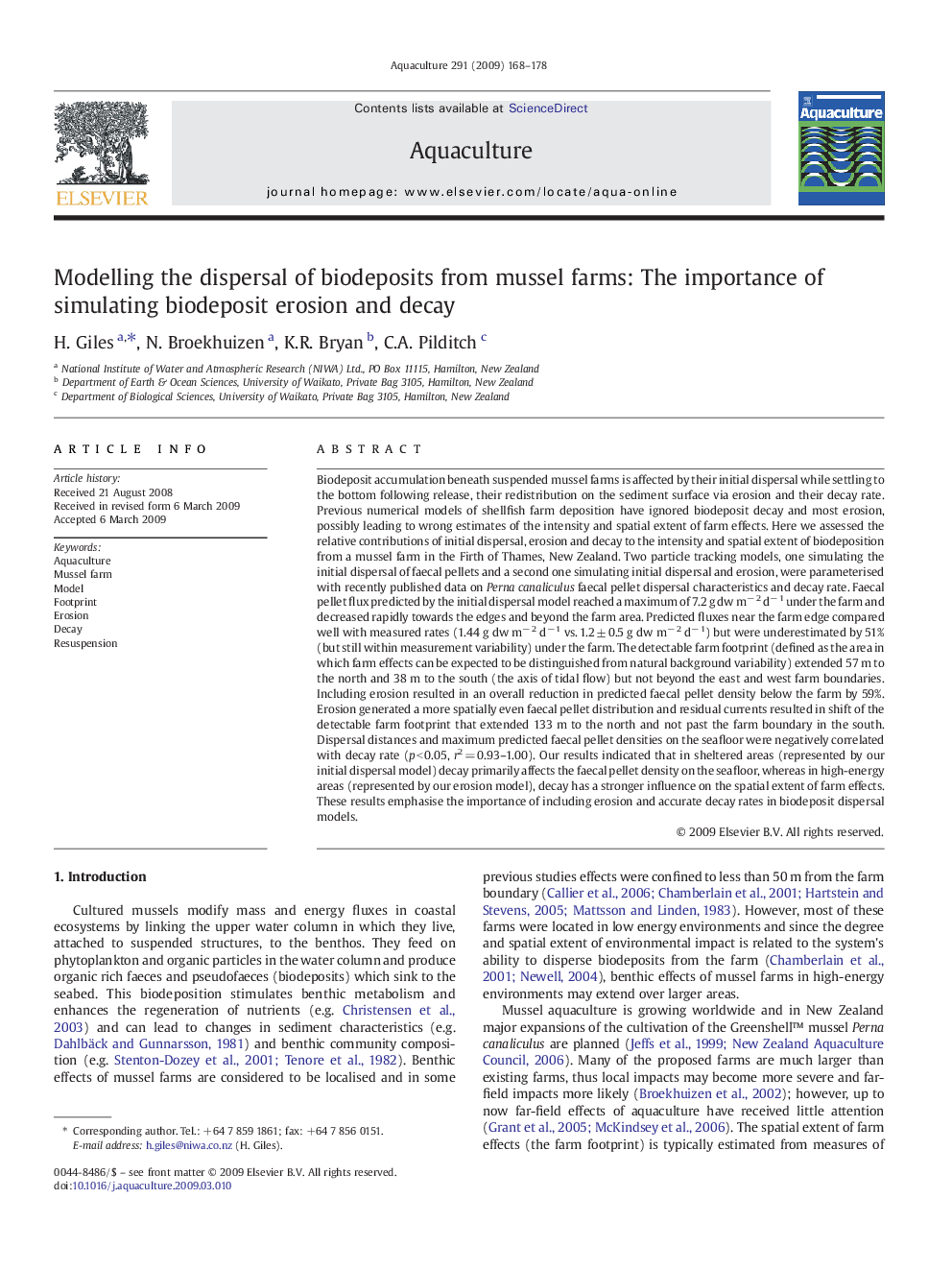| کد مقاله | کد نشریه | سال انتشار | مقاله انگلیسی | نسخه تمام متن |
|---|---|---|---|---|
| 2424120 | 1552944 | 2009 | 11 صفحه PDF | دانلود رایگان |

Biodeposit accumulation beneath suspended mussel farms is affected by their initial dispersal while settling to the bottom following release, their redistribution on the sediment surface via erosion and their decay rate. Previous numerical models of shellfish farm deposition have ignored biodeposit decay and most erosion, possibly leading to wrong estimates of the intensity and spatial extent of farm effects. Here we assessed the relative contributions of initial dispersal, erosion and decay to the intensity and spatial extent of biodeposition from a mussel farm in the Firth of Thames, New Zealand. Two particle tracking models, one simulating the initial dispersal of faecal pellets and a second one simulating initial dispersal and erosion, were parameterised with recently published data on Perna canaliculus faecal pellet dispersal characteristics and decay rate. Faecal pellet flux predicted by the initial dispersal model reached a maximum of 7.2 g dw m− 2 d− 1 under the farm and decreased rapidly towards the edges and beyond the farm area. Predicted fluxes near the farm edge compared well with measured rates (1.44 g dw m− 2 d− 1 vs. 1.2 ± 0.5 g dw m− 2 d− 1) but were underestimated by 51% (but still within measurement variability) under the farm. The detectable farm footprint (defined as the area in which farm effects can be expected to be distinguished from natural background variability) extended 57 m to the north and 38 m to the south (the axis of tidal flow) but not beyond the east and west farm boundaries. Including erosion resulted in an overall reduction in predicted faecal pellet density below the farm by 59%. Erosion generated a more spatially even faecal pellet distribution and residual currents resulted in shift of the detectable farm footprint that extended 133 m to the north and not past the farm boundary in the south. Dispersal distances and maximum predicted faecal pellet densities on the seafloor were negatively correlated with decay rate (p < 0.05, r2 = 0.93–1.00). Our results indicated that in sheltered areas (represented by our initial dispersal model) decay primarily affects the faecal pellet density on the seafloor, whereas in high-energy areas (represented by our erosion model), decay has a stronger influence on the spatial extent of farm effects. These results emphasise the importance of including erosion and accurate decay rates in biodeposit dispersal models.
Journal: Aquaculture - Volume 291, Issues 3–4, 16 June 2009, Pages 168–178